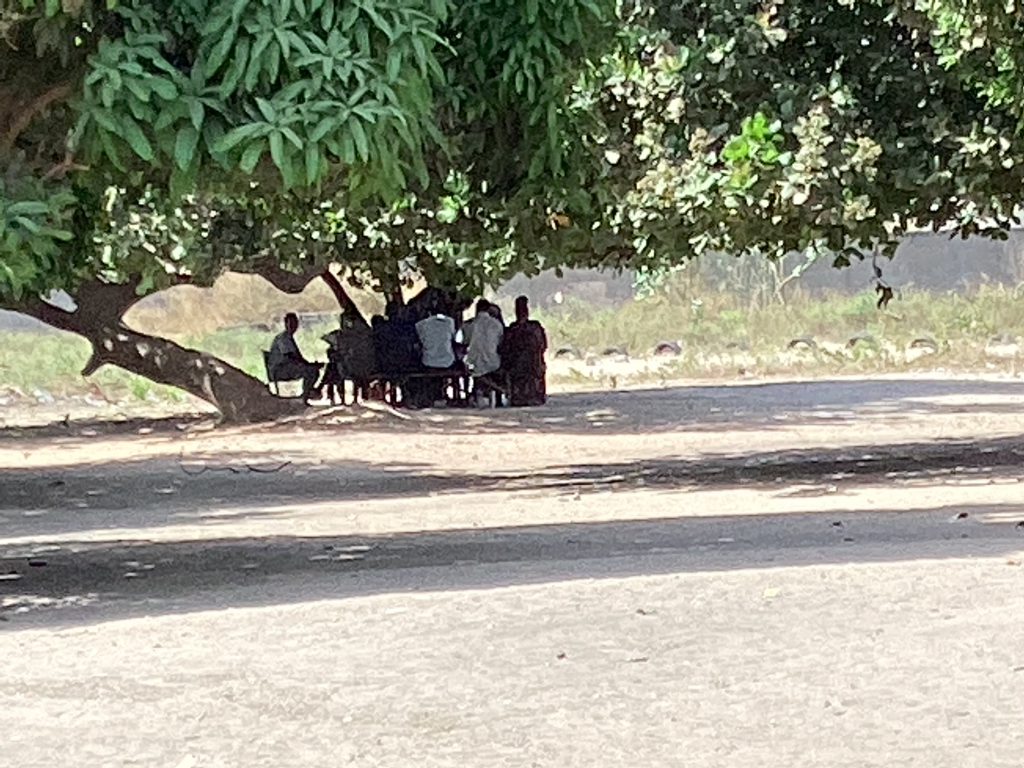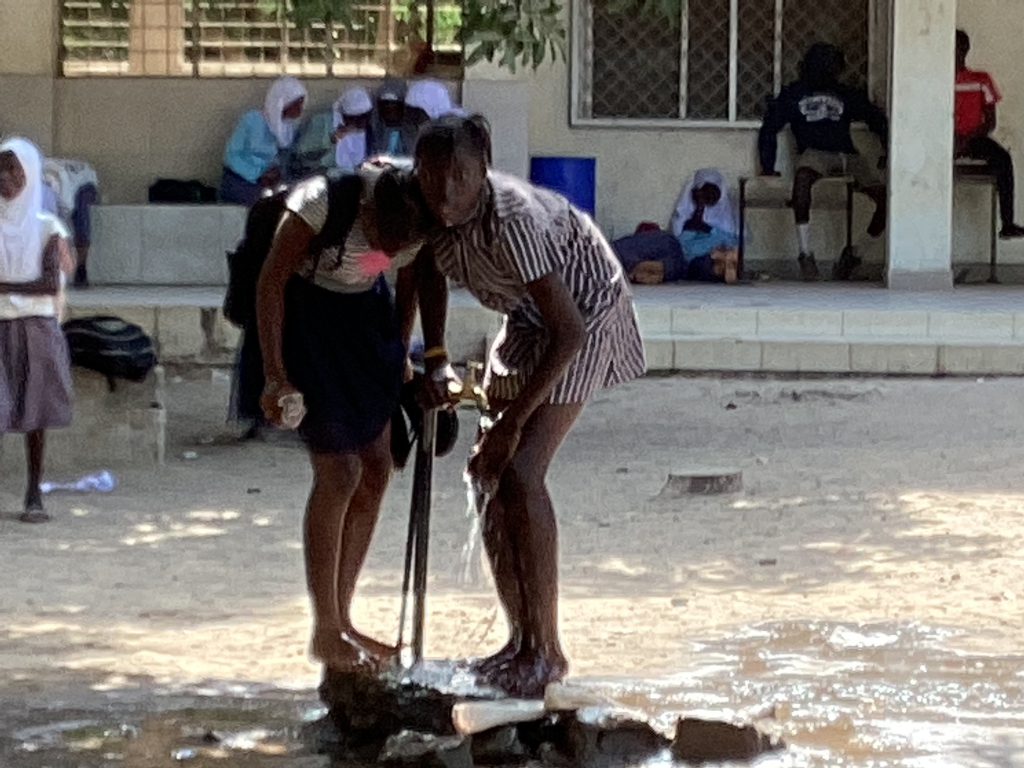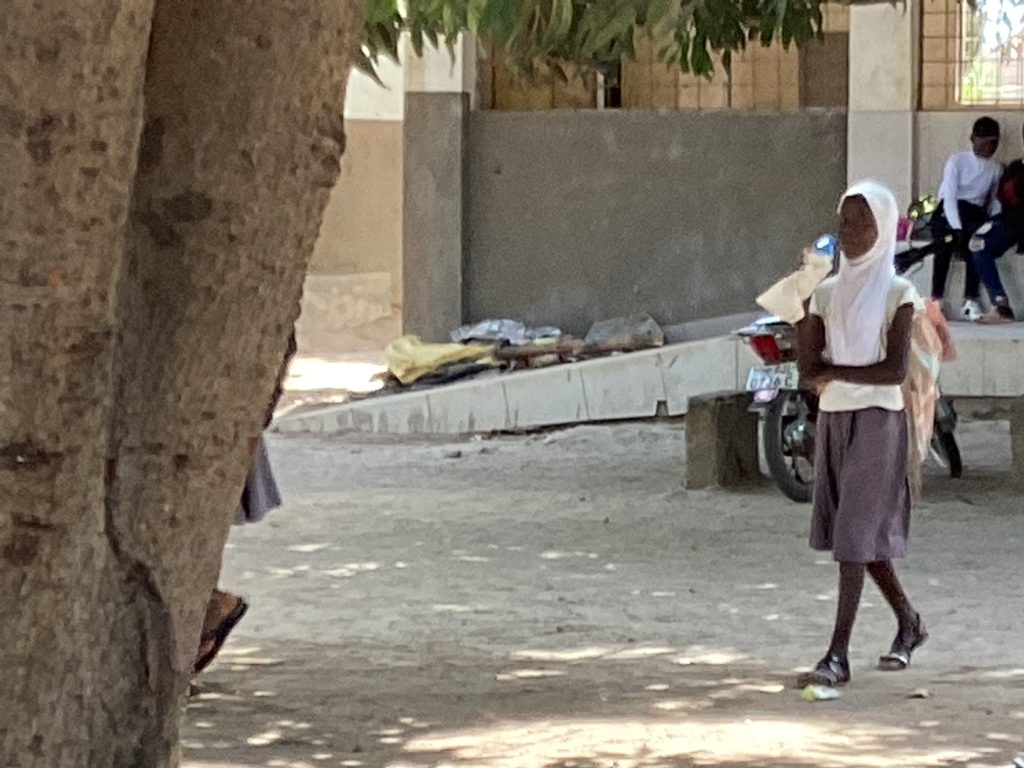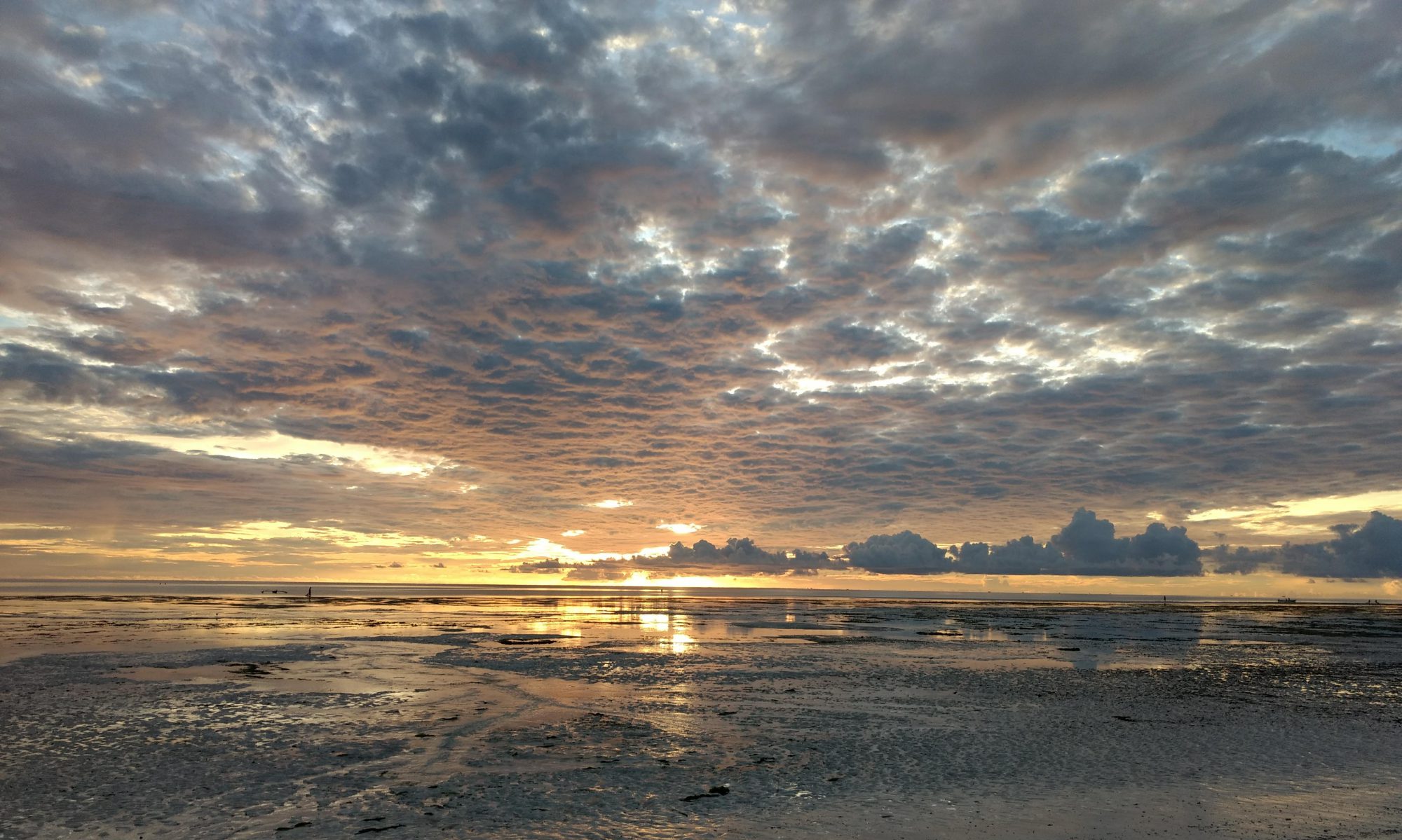I got up early (5:30) to join EM at the market in Serrekunda. First, we had a walk on sandy “roads” for about 30 minutes and then take a local ”taxi” for about another 30 minutes, which actually was a very old and shabby van. I counted the passengers, 15 of us were squeezed in tight and close to each other. The van stopped every now and then to let either people jump off or on.
At the market you could find different types of vegetables, fish, meat, chicken and rice. Thousands of flees were buzzing around the baskets of food. The smell was very intense from all the merchandises. In a corner I found a man selling shampoo which I had forgotten to bring. He also sold a cream he called conditioner for hair, so I bought that one too plus batteries for my flashlight and a towel. Before leaving the market, we stopped by a tailor to fix my broken handbag in leather. He fixed it in a couple of minutes, and I only had to pay him 100 (GMD) Gambian dalasi which is less than 20SEK. On the way back it was difficult to find a taxi because of the lively traffic. We had to change taxi or van twice and the last part of the trip, we had a small tuk-tuk with already another passenger inside, so we were four, the driver included. As we almost reached our compound the tuk-tuk was very close to get hit by another car! The tuk-tuk that drives on only three wheels almost rolled over on the side as the driver had to quickly maneuver the tuk-tuk to the opposite side. I was shaking a bit during the last walk towards the compound and thinking how lucky we were not to get hurt!
At home I washed my hair in the shampoo from the market. It was more like some dish liquid and the “conditioner” was a kind of grease that I hardly managed to get rid off, even for many days. Before bedtime I tried to phone the teacher, I had contacted earlier from Sweden. Unfortunately, without any luck.




